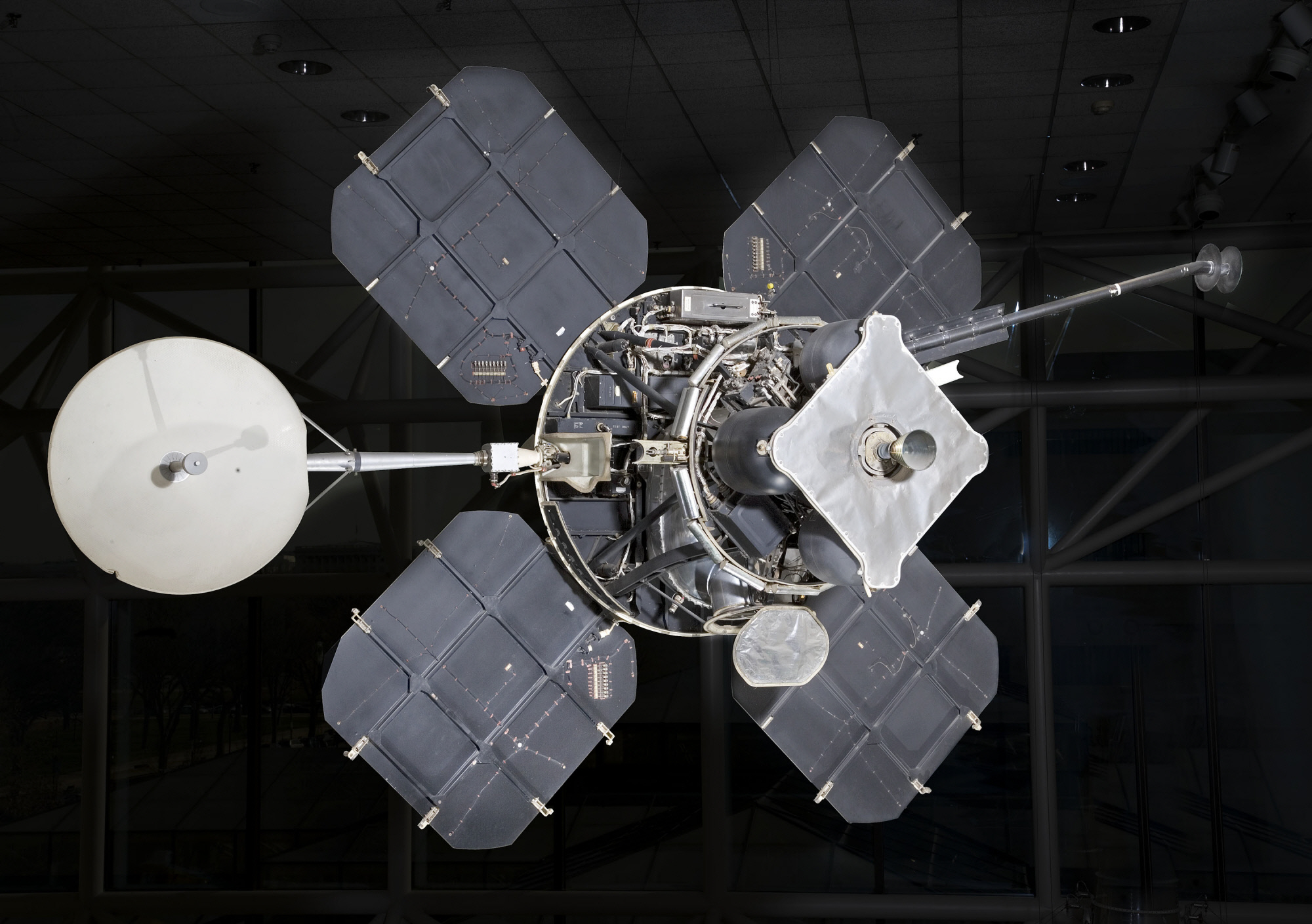The Lunar Orbiter Program consisted of spacecraft placed into lunar orbit to take photographs of the surface to identify potential suitable landing sites for the Apollo Program. Managed by the Langley Research Center, five Lunar Orbiters were successfully flown in 1966 and 1967 and achieved all their objectives, mapping 99% of the Moon’s surface with a resolution of 60 meters.
Based on these high-resolution photographs, scientists and mission planners were able to identify several sites that met criteria for the first lunar landing, such as being near the equator, in relatively flat terrain, and with an unobstructed approach path. The NASA Apollo Site Selection Board would name five candidate landing sites in February 1968. The first Earthrise photograph was taken by Lunar Orbiter 1 on August 23, 1966, more than 2 years before the more famous one taken by Apollo 8 astronauts. Between August and October 1967, three active Lunar Orbiters were simultaneously tracked around the Moon.
When their missions were over, the Lunar Orbiters were commanded to crash into the Moon to prevent interference with any future spacecraft. The first impacted on October 29, 1966, three crashed on October 9, 11 and 31, 1967, and the final one on January 31, 1968. This often overlooked program was essential in accomplishing the Moon landings before the end of the decade.
For more on the Lunar Orbiter program, see https://nssdc.gsfc.nasa.gov/planetary/lunar/lunarorb.html
Lunar Orbiter imagery is available online at http://www.lpi.usra.edu/resources/lunar_orbiter/

























